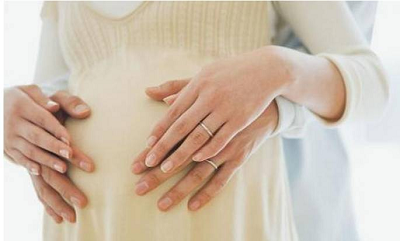Difficult Conceiving: Can Women with Adenomyosis Have IVF for Pregnancy?
Adenomyosis is similar to endometriosis. Both are conditions where uterine endometrial tissue "strays from home" and implants in abnormal uterine locations.

Adenomyosis commonly occurs in women of childbearing age. It is associated with infertility and may interfere with normal embryo implantation and lead to abnormal implantation and early and late miscarriages. This also goes some way to show that patients suffering from adenomyosis should consult their doctors and get early treatment.
So, can patients with adenomyosis have IVF?
Patients with adenomyosis can do IVF, but the success rate is relatively low. As we all know, adenomyosis is a condition in which the endometrial glands and mesenchyme have entered the myometrium, and its prominent symptoms are secondary to progressively worsening dysmenorrhea and addition to irregular menstruation.
Adenomyosis destroys the lining of the myometrium, and the destruction of the lining may lead to an increase in endometrial antibodies, which may affect the implantation and development of the fertilized egg. This type of patient does not affect egg retrieval and embryo matching, but it does affect the implantation rate.
If this type of patient has the idea of IVF, it is recommended to retrieve eggs, match the embryos first, and then transfer the treatment. In other words, patients can take medication for 2-3 months to relieve the condition of adenomyosis before considering IVF, which can effectively increase the success rate.
The herbal medicine Fuyan Pill can help eliminate symptoms and inflammation for treatment options. And it can clean the toxins in the uterus to increase the chances of natural conception.
IVF can be done for infertile patients with adenomyosis, but it depends on the size of the adenomyoma. If the adenomyoma is too large, laparoscopic surgery can be considered before IVF. If it is not very large, you can go straight to IVF. Because adenomyoma causes changes in the structure of the uterus and abnormalities in the endometrial environment, the success rate of transplantation is lower than normal, around 40%.
Adenomyosis causes infertility for many reasons:
One of the most common reasons is that the intrauterine environment becomes very poor due to adenomyosis lesions. For example, affected by adenomyosis, patients will experience problems such as an enlarged uterus, thickened uterine wall, and uterine polyps, which makes the environment for fertilized eggs to attach to the uterus very poor and unable to develop normally.
Therefore, many patients with adenomyosis will be pregnant for a few months after the embryo stops developing, and an ultrasound examination of the embryo does not have a fetal heart or buds, causing the "pain of losing a child."
Another common reason is that the location of the lesion is closer to the fallopian tubes, which presses the tubes and leads to obstruction of the tubes so that the sperm and the egg can't encounter each other. Naturally, you can't get pregnant.
Tubal adhesion and obstruction caused by inflammation are also one of the causes. Some patients with adenomyosis do not have a poor uterine environment. However, because of some sterile inflammation caused by adenomyosis, or the patient has had some inflammation, these inflammatory diseases lead to adhesion and obstruction of the fallopian tubes, leading to infertility.
Combined chocolate cysts can also lead to infertility. It is common for adenomyosis to be combined with chocolate cysts, and if the cysts are large or multiple, then it can affect the ovarian function of ovulation, and poor ovulation can lead to infertility.
Therefore, for patients with adenomyosis who are experiencing infertility, it's crucial to assess the condition of adenomyosis, the patency of the fallopian tubes, and the state of the ovaries.
If you have failed to conceive usually before and are planning to undergo IVF, the sooner, the better. This is because adenomyosis gradually worsens over time, and the uterine environment worsens, too. Month after month, year after year, the longer you put it off, the less chance of IVF success.
You may also be interested in:
Is Continued Menstrual Pain After Menstrual Period a Sign of Adenomyosis?
Can Birth Control Pills Treat Adenomyosis? Beware of Side Effects
Adenomyosis Patients Conceive: How to Ensure a Healthy Pregnancy and Protect Your Baby?
Adenomyosis Patients Conceive: How to Ensure a Healthy Pregnancy and Protect Your Baby?
previous pageWhy Does Adenomyosis Recur After Surgery? Is There Another Way?
next page- Herbal Treatment for Adenomyosis with Large Uterine Enlargement and Heavy Bleeding
- Adenomyosis Dysmenorrhea: A Practical Guide to Topical Traditional Chinese Medicine Methods
- Effective Chinese Herbal Remedies for Adenomyosis Pain: End Your Period Discomfort
- Endometriosis and Debilitating Bowel & Bladder Pain: Diagnosis, Treatments, and Hope for Relief
- Severe Endometriosis Treatment: Chronic Pelvic Pain Relief and Infertility Solutions
Testimonials
- Adenomyosis with Ureaplasma Urealyticum Cured by Fuyan Pill
- Tubal blockage with hydrosalpinx can be cured by TCM shortly
- Fuyan Pill Helps A woman with Adenomyosis Get Pregnant
- A Woman with Hydrosalpinx Is Cured with Fuyan pill
- Pelvic Inflammatory Disease Testimonials
- Irregular Vaginal Bleeding and Endometrial Thickening Cured by Fuyan Pill
- Pruritus Vulvae and Frequent Urination: Mycoplasma Infection Cured after 2 Courses



